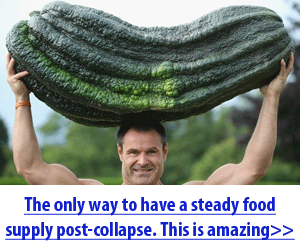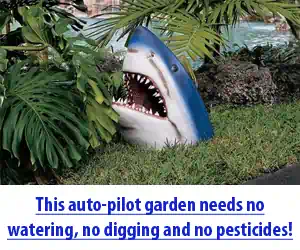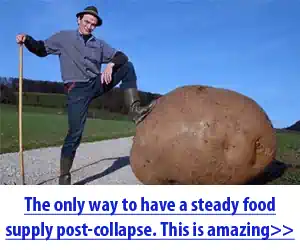Food Waste Depackaging Machines for Pulp Energy Extraction
by RDF'er
Posted on 03-02-2023 11:45 PM

On This Page:
- Food Waste Depackaging Machine
- Plastic Bottle Depackaging Machine
- T42 food waste depackaging system
- Kerbside waste (organic house hold)
- Restaurant & hotel waste
- Industrial & commercial organic waste
- Processing 10 tons of food waste per hour
- Packaged food waste - no problem
- Unpacking our food waste depackaging technology
- food waste depackaging equipment
- Food Waste Depackaging & Recycling
- De-Packaging Waste to Recycle More
A food waste depackager can use multiple characteristics and switches to produce a high quality pulp output and a reject stream of everything else.
For example, tensile/compressive strength is the code and applied force renders it open as the switch. Hardness, or resistance to force, can be a code, and pressure as a switch opens packages of sso to separate out the packaging.
The switches employed by the machines in the market today are variations on applied force, either in a tangential shearing action, a vertically-oriented hammering action, horizontal or vertical pressure through a metal sieve or screen, or some combination thereof.
A good food waste depackaging system converts waste into biogas and other sustainable fuels while diverting organic waste from landfills and diverting it to value-added product streams.
Materials accepted by specialised robust depackaging machines include frozen foods, canned foods, vacuum packed meats and fish, bulk packaged breads, chips, snacks, chewy candy bars, and bakery products. The gentle depacking process strives to keep packaging intact in order to produce clean food waste with minimal contamination.
Biogen is a UK-based food waste-to-biogas company. Tiger machines are owned and operated by them at three of our existing food processing facilities: Millerhill, Halstead, and Basingstoke. The tigers work at the front end of their anaerobic digestion plants for food waste. They are intended to separate organic and non-organic material from raw material at the front end. The non-organic material, which is mostly packaging, is either disposed of or re-used as an alternative fuel.
The organic material (pulp biomass) is pumped into a holding tank before being pasteurised and digested in sealed tanks to produce methane gas for use in green energy production.
A self-contained, hopper-fed liquid depackaging system designed to separate liquids, gels, creams, and semi-solids from their plastic, glass, or metal containers is a common type of depackaging unit. Large amounts of waste are converted into a clean and compacted recyclable commodity by the industrial shredder and separator.
This type of patented system will provide you with the peace of mind that comes with onsite product destruction and depackaging while also saving you money on waste hauling and landfill fees. Furthermore, the system's food waste can be composted or converted into biogas. The clean, compacted solids from this food recycling machine can now be easily recycled!
Food depackaging is the process of separating organic waste from inorganic packaging materials. Organics by gosh can reclaim the organic content once separated to produce clean, high-quality compost and sustainable soil products. When possible, packaging materials are recycled. Because many foods are sealed in packaging, keeping them out of landfills can be difficult. Food depackaging services are critical for diverting waste from landfills and maximising beneficial waste stream recovery.
The dominator waste depackaging machine separates outer packaging from inside waste, allowing you to reuse and recycle waste that would otherwise be thrown away. Food waste is a growing concern for many businesses, municipalities, and manufacturers. Much of the waste generated cannot be accepted directly into the manufacturing process, but must be separated or removed from the outer waste packaging before it can be processed.
Food waste is an expensive commodity, and the pressure to recycle more falls squarely on the businesses that generate or manage it. Packaged food waste is frequently so problematic that businesses simply discard it. The i-fdr depackaging system separates the packaging from the food without the need for staff to segregate it. As a result, packaged food producers and retailers can benefit from everything the id-r systems have to offer, including cost savings and potential revenue opportunities.
The model t42 is the pinnacle of pre-consumer food waste depackaging systems. It can process between 10 and 30 tonnes per hour, depending on the product. The horizontal shaft is equipped with 56 flat paddles that work in tandem to split, separate, and convey. The organics are collected and either transported or pumped to a storage location. Inorganic waste is also collected and transported to a roll-off container or compactor.
The turbo separator system is easy to use and operate due to its simple design. It is extremely effective at depackaging food waste and can process a wide range of dry, wet, and in-between substances.
Engineering of the process The Hermitage Municipal Authority upgraded their water pollution control plant, increasing wastewater treatment capacity and introducing a two-phase advanced anaerobic digestion (aad) complex to its current plant operations. This complex improves the solids handling train by promoting biosolids stabilisation, biogas recovery, and heat and power generation. When alternative feedstocks, such as high-strength industrial waste, food waste, and grease, are combined with sewage sludge during digestion, gas production and power generation are maximised. The authority hired rettew to conduct a solid food waste depackaging study and implement the selected technology in order to capitalise on the upgrades by increasing the amount of outside waste received.
With government legislation increasing pressures to divert organic waste from landfill, food processing, food manufacturers, and waste recycling companies must consider the opportunities to recover and recycle this valuable material. The Cesaro Tiger is a highly adaptable mobile system for depackaging food waste, separating the organic fraction from its packaging.
One company sells new and used depackaging machines to waste-producing industries all over the world. The dominator depackager, the company's flagship machine, uses mechanical forces to process and package non-recyclable waste materials into renewable energy sources such as heat, electricity, and fuel, reducing waste by up to 90%.
The Plastic Bottle Depackaging Machine
A state-of-the-art bottle depackaging machine separates all types of packaging from organic food byproducts (glass, metal, plastic, paper, etc.). Through our partners, we can capture the organic matter and convert your food waste into compost, fertiliser, livestock feed, and/or energy production.
Scarcity of resources is a common impediment to recycling. Businesses that handle recyclable cans, pet bottles, or cartons may benefit from depackaging equipment. While there are depackaging companies that can help you with this, many businesses now prefer to do it themselves. These containers are typically not recycled because they must first be rinsed of liquid waste before being recycled. A depackaging machine can assist you with this task while also providing unexpected benefits to your recycling efforts.
The intake trough and the separator mechanism comprise the depackager. The cutting-edge de-packaging machine was the first of its kind in the northeast, and many of our farm-based digester partners now use it.
To separate expired or damaged packaged food from its plastic, metal, styrofoam, or cardboard container, a network of paddles and screens work in tandem. To generate renewable energy, the resulting food waste slurry is digested with cow manure. This cutting-edge technology makes it easier to recycle food waste that would otherwise end up in a landfill due to its packaging.
Kerbside waste (organic household)
Securing, receiving, depackaging, and pre-treating substrates that can be mixed with sewage wastewater sludge is the first step in any successful co-digestion process.
A depackager unit process is primarily used to depackage expired products such as dairy, meat, confectionery industry, manufacturing residuals, bakery wastes, including uncooked and cooked dough, expired soft drinks, expired food products, waste from grocery chains, waste from cafeterias, restaurants, commercial kitchens, restaurant, household, and kitchen wastes, and landfill diverted organics.
Furthermore, unpackaged materials from other facilities, such as sewage liquid with 1 to 30% dry solids concentration, dairy waste, septic tank sewage, and dewatered cake, can be accepted by the process.
Restaurant & hotel waste
An entity that generates organic, biodegradable waste can divert it to anaerobic digestion. Hotels, grocery stores, food and beverage manufacturers, cafeterias, restaurants, and other businesses are ideal candidates for the programme.
Your company or organisation can divert packaged and unpackaged food waste, such as prepared foods, fruits and vegetables, meat and dairy products, and fats, oils, and grease (F. O. G.). You can divert your food waste from the landfill to wasatch resource recovery through momentum recycling, resulting in significant cost savings and long-term risk management.
In hotels and restaurants, food leftovers, stale food, and a large amount of kitchen waste such as vegetable peels and spoiled food ingredients are common. As a result, startups are offering on-site food waste treatment solutions to convert the waste into biogas in order to avoid dumping it in landfills. This biogas is then used for cooking in homes and restaurants, increasing sustainability.
Our aerobic digesters play a critical role in reducing the volume of food waste and organic matter generated by restaurants, hotels, pub chains, catering organisations, schools, and any other establishment that generates one tonne or more of organic food waste per month. We can radically reduce the removal costs and where appropriate, create food waste to energy conversion that provides free heat and/or cooling - all on site and hassle free!
We assist commercial businesses in meeting sustainability goals by providing previously limited access to organic waste depackaging services. The depackaging process, which is reasonably priced compared to landfilling, keeps organic components of business trash out of landfills.
There are no other municipal operations of this type in the Midwest, and only a few nationwide. This should set a precedent for other municipalities to follow in order to transform how organic waste is handled across the country.
Processing 10 tons of food waste per hour
Food waste collection and transfer entails the collection and transfer of food scraps, food processing residuals, and soiled or unrecyclable paper. The municipal transfer station general permit ("mts gp") is required for any municipal transfer station.
By diverting your package material with our new turbo separator, Salinas Valley Recycles can help your business comply with ab 1826 and SB 1383. The turbo separator can process up to 10 tonnes per hour (or 80 tonnes per day) and produces a 99% clean stream of organic material that can be composted with food waste.
Food waste depackaging and separation can recover wet, dry, and contaminated food streams; the organic fraction can be composted, fed to animals, or used in advertising.
Plastic, paper, steel/tin, aluminium, and other types of packaging and contamination can be separated at a 98% rate. There are four models available, with processing capacities ranging from 5 to 20 tonnes per hour depending on infeed density.
Packaged food waste - no problem
Food waste is one of the most pressing issues of our time, affecting people, the environment, and profit. However, the average person may be unaware of how the food they throw away contributes to climate change.
Packaged materials are loaded into a separation chamber, where they are opened by a variety of durable and adjustable paddles. These paddles produce a squeezing action that separates packaging from its contents while causing no damage to the packaging. The recovered food and liquids are delivered to our south east organics facility (seof) to be repurposed into nutrient-rich compost for use on broadacre farms and crops, resulting in a closed loop solution for food waste. When possible, the packaging material is taken to the south east Melbourne transfer station to be recovered for recycling.
We are left with an organic mass and packaging material after de-packaging your packaged food items. The organic material is fermented, and the packaging material is converted into alternative fuel. As a result, we make every effort to upgrade your food waste as much as possible.
The'review of food waste de-packaging equipment' provides detailed specifications and information on technologies currently available from a variety of companies, as well as contact information for a number of others. "Food waste processors have discovered that recycling packaged food waste has been a problem in the past," said wrap's director of retail and organics. However, according to this report, there is now a diverse range of de-packaging equipment on the market.
Packaged foods should be discarded if they are out of date, mislabeled, damaged, or spoiled. To reduce this avoidable waste, new facilities for efficiently removing food from various types of packaging are being developed. The resulting organic material is free of packaging and contaminants and can be used for anaerobic digestion, composting, or animal feed, depending on its properties.
Food waste separation of organic material from its packaged containment is no longer an option, but rather a requirement for businesses, municipalities, and other organisations. Food (and other organic) waste depackaging maximises animal nutrition, composting, and anaerobic digestion while reducing reliance on landfills, thereby meeting regulatory compliance.
Unpacking our food waste depackaging technology
This technology is intended for food waste and packaging recovery operations and is designed to remove 99.6% of contaminants from organic fractions. Composting, anaerobic digestion, animal nutrition, recycling, and repurposing are some of the applications.
Depackaging is an essential part of waste management processes for zero waste food businesses. They can easily separate recyclable containers from any food waste that may be inside using this technology.
Food depackaging equipment varies, but common models unscrew bottles or perforate cans, cartons, and bottles before rinsing whatever liquid is inside. This is especially useful for depackaging milk, yoghurt, soft drinks, barbecue sauces and ketchup, ice cream, liquid soaps and detergents, and other products.
Food waste depackaging equipment
The United States has pledged to cut food waste by half by 2030. The office of land and emergency management (olem) promotes anaerobic digestion and composting of food waste to divert food waste from landfills; however, contamination of food waste with packaging (including film plastics) may complicate composting and anaerobic digestion operations and reduce the market desirability and safety of land application of compost and digestate made from food waste. Large food waste generators and treatment facilities are increasingly using de-packaging technologies (beyond screens and filters) as primary means of removing plastics. This product will put de-packaging equipment on the market to the test in real-world scenarios.
The waste & resources action programme (wrap) identified food waste packaging in feedstocks as a potential barrier to efficient processing in a report released earlier this week (August 4) titled'review of food waste depackaging equipment'. As a result, wrap commissioned slr consulting limited (slr) to conduct a literature review of the available food waste depackaging equipment in order to summarise the key information for potential project developers.
The packaging is separated mechanically from the organic waste. While manufacturers take great care to maintain food integrity, unexpected challenges can arise that render products unsafe for human consumption. This includes foods that were not sold before their expiration date or materials that, for whatever reason, failed to remain refrigerated due to equipment failure.
Total organics recycling can arrange for commercial manufacturers' packaged spoilage to be delivered to St. Louis composting's depackaging facilities, where we can separate the material that cannot be composted (the packaging) and reclaim the organic material (the food) to find a second beneficial purpose. The packaging can then be recycled, disposed of, or converted to energy.
Food Waste Depackaging & Recycling
Working directly with food manufacturers and other organic waste producers from across the food and beverage spectrum, many renewable energy company’s projects now place an emphasis on recycling organic waste that would have previously ended up in a landfill.
Optimize biogas production with a screw compactor food waste is very suitable for anaerobic digestion plants. By separating as much of the organic liquid from the packaging the more feed stock is created for the plant and the weight of the packaging is reduced.
The packaging normally goes to landfill.
De-Packaging Waste to Recycle More
Do you have expired product that you need to destroy but want to recycle the packaging? The zero waste monster is JWC environmental’s standalone product depackaging system that can easily fit in your plant to take care of these issues!
The first stage of the zero waste monster is to break open the product, which is performed by the monster industrial shredder inside the zwm. This video shows you that first step of the process. Watch the industrial grinder in action!.


